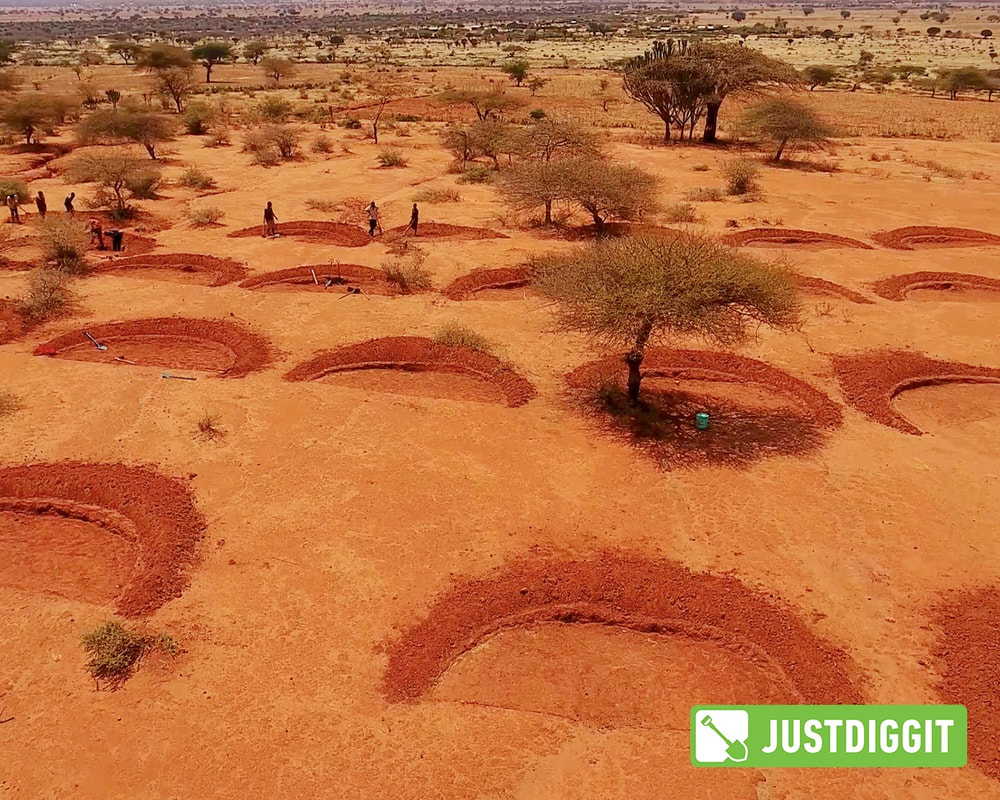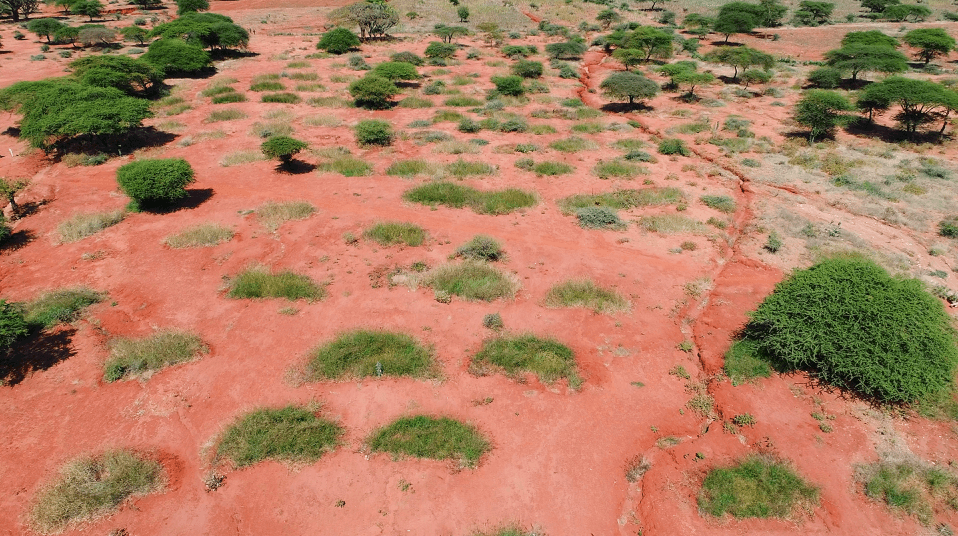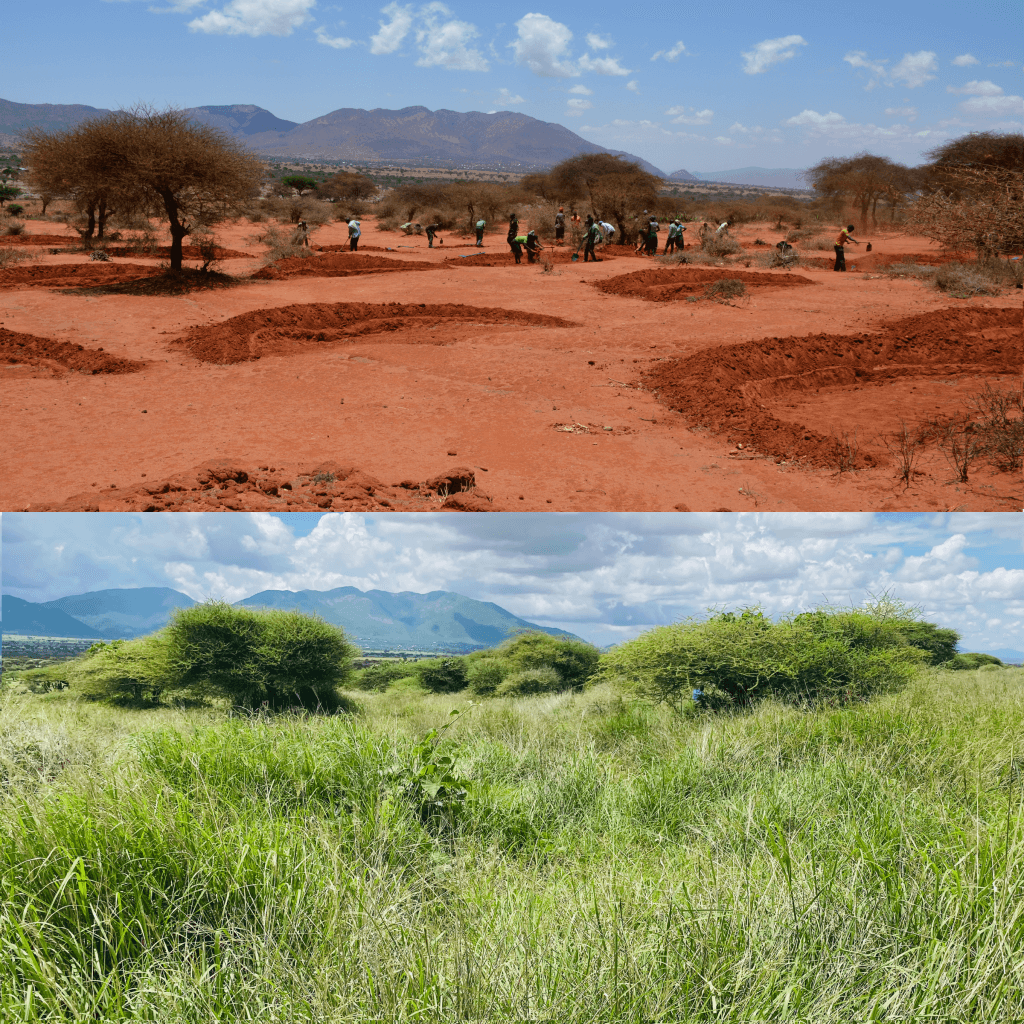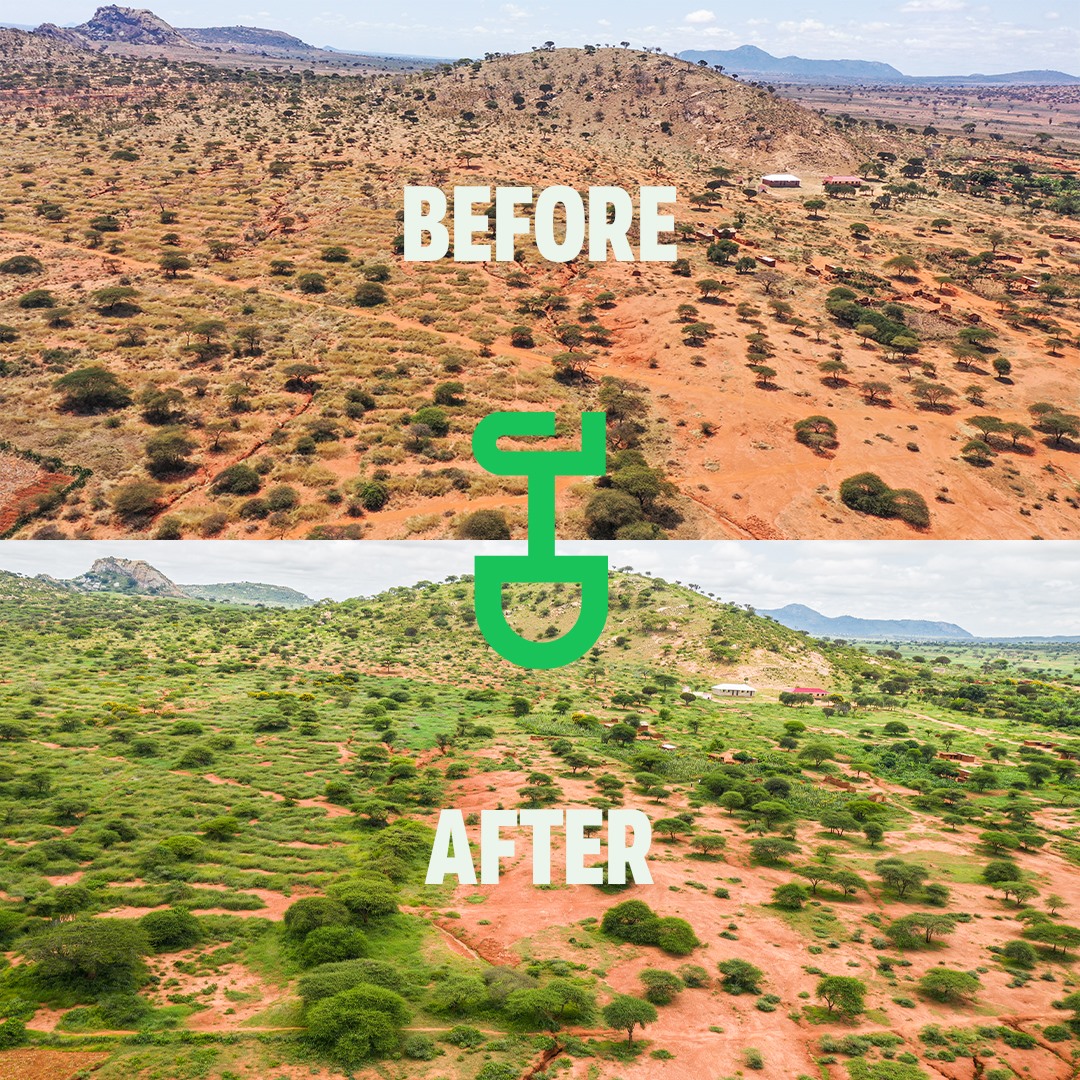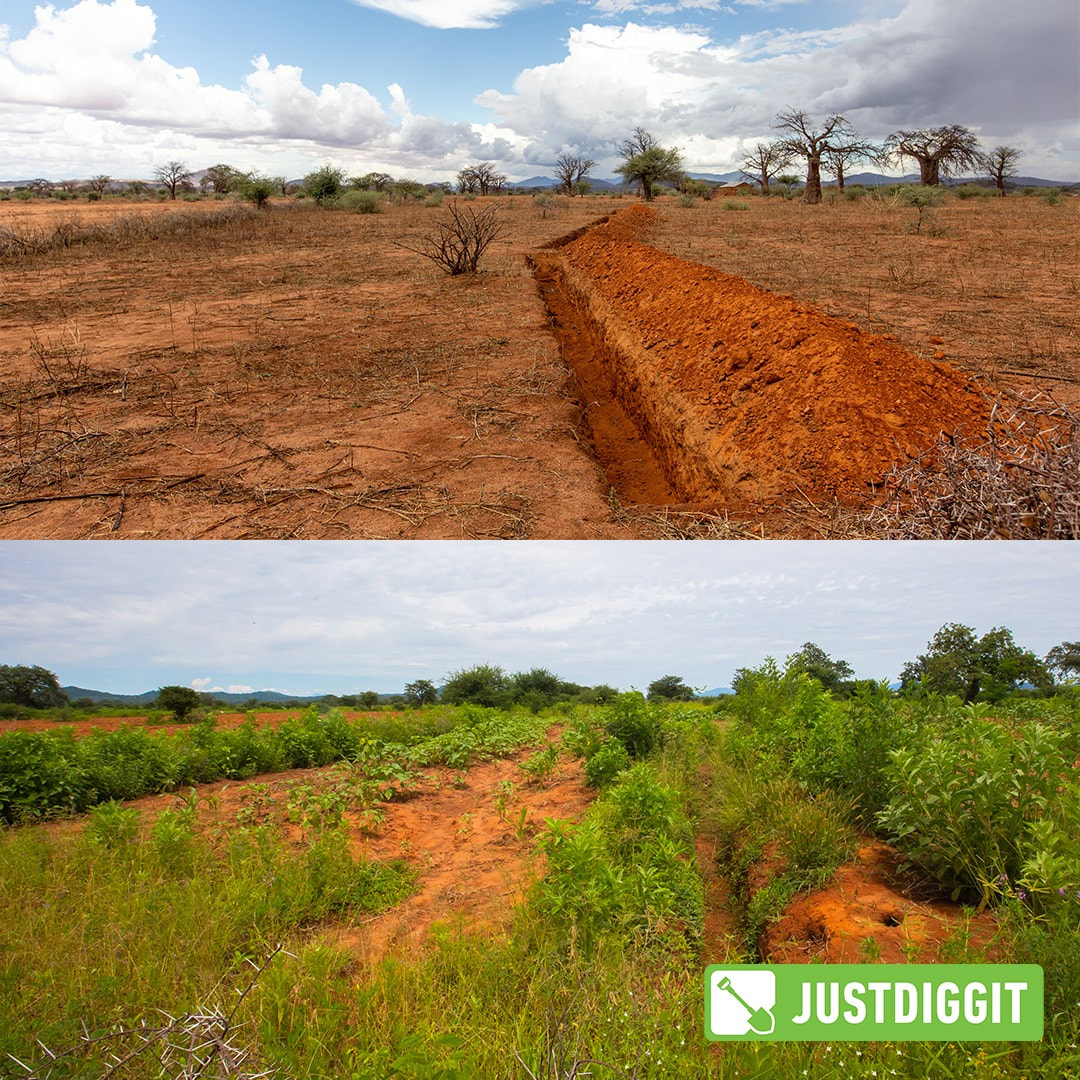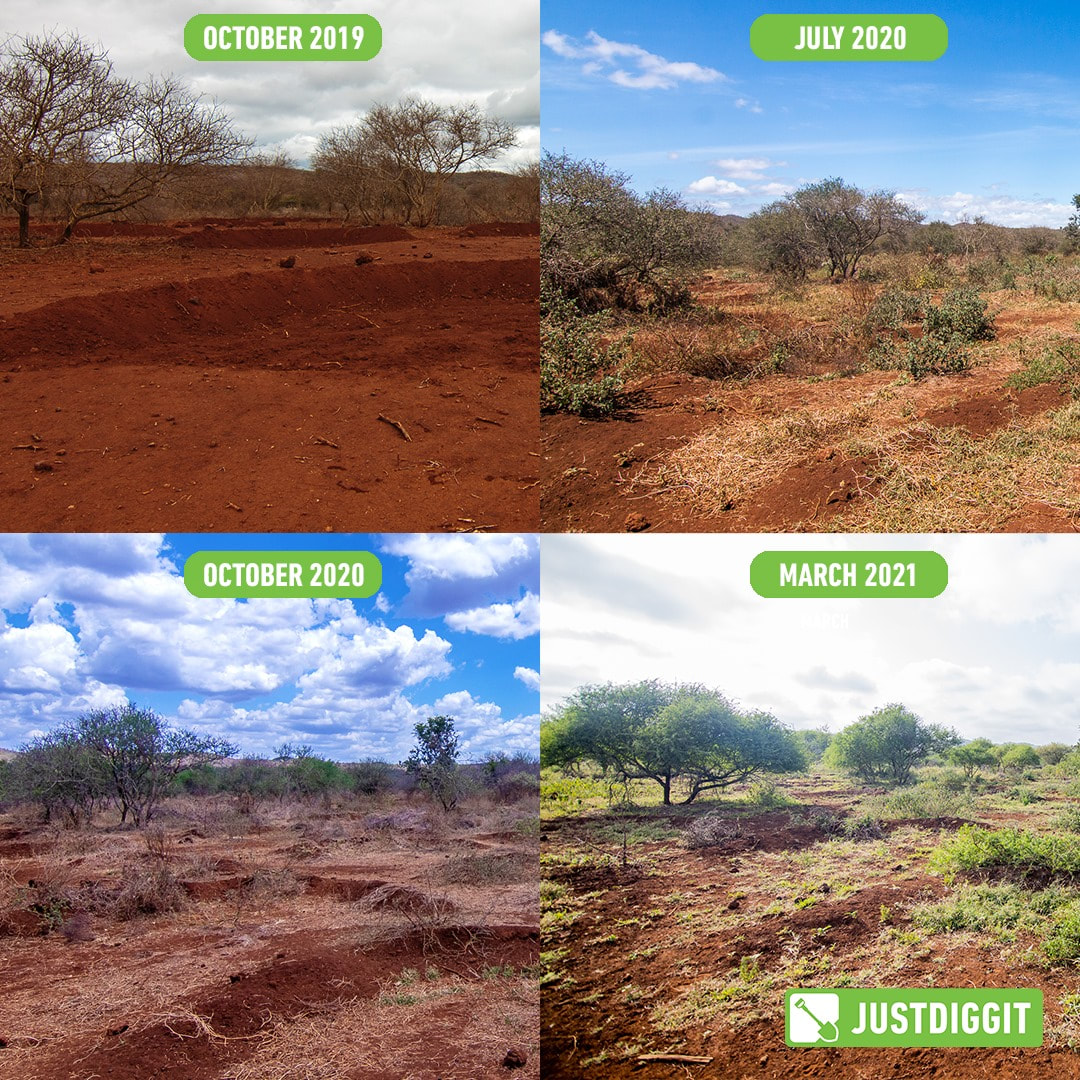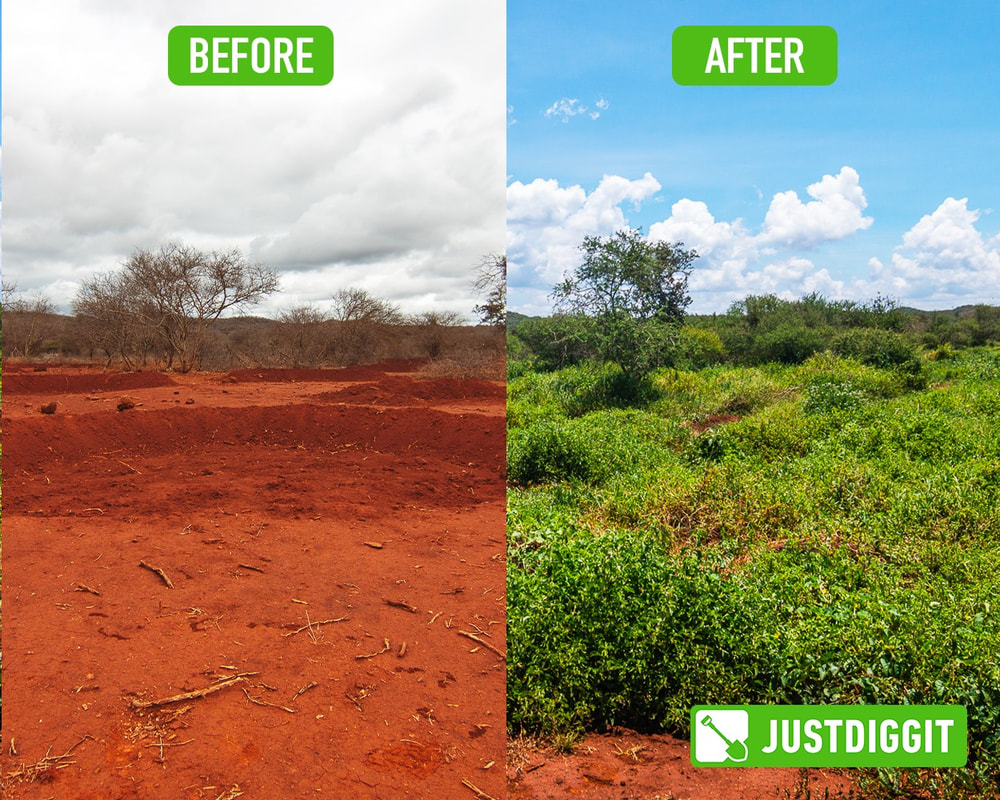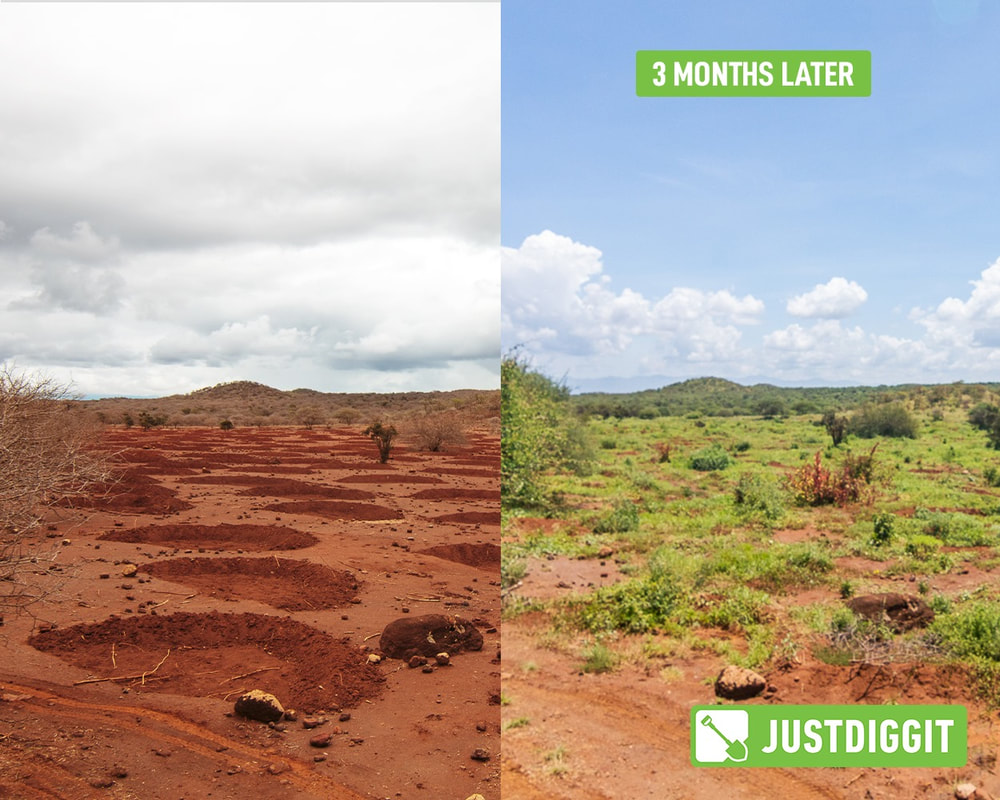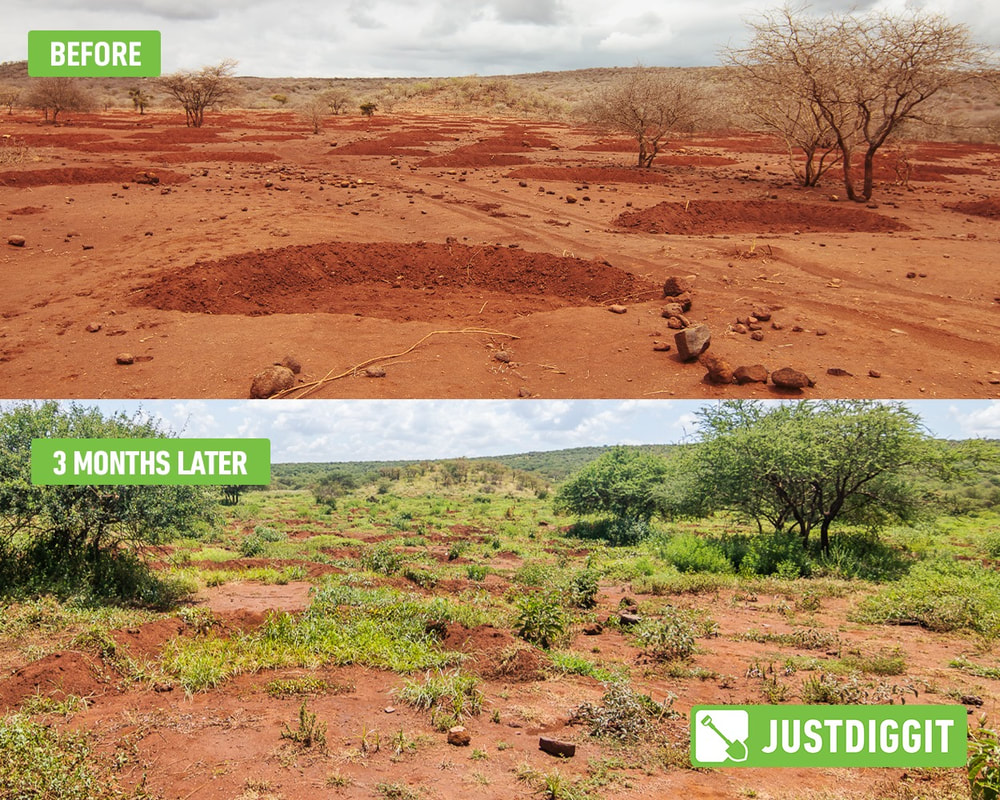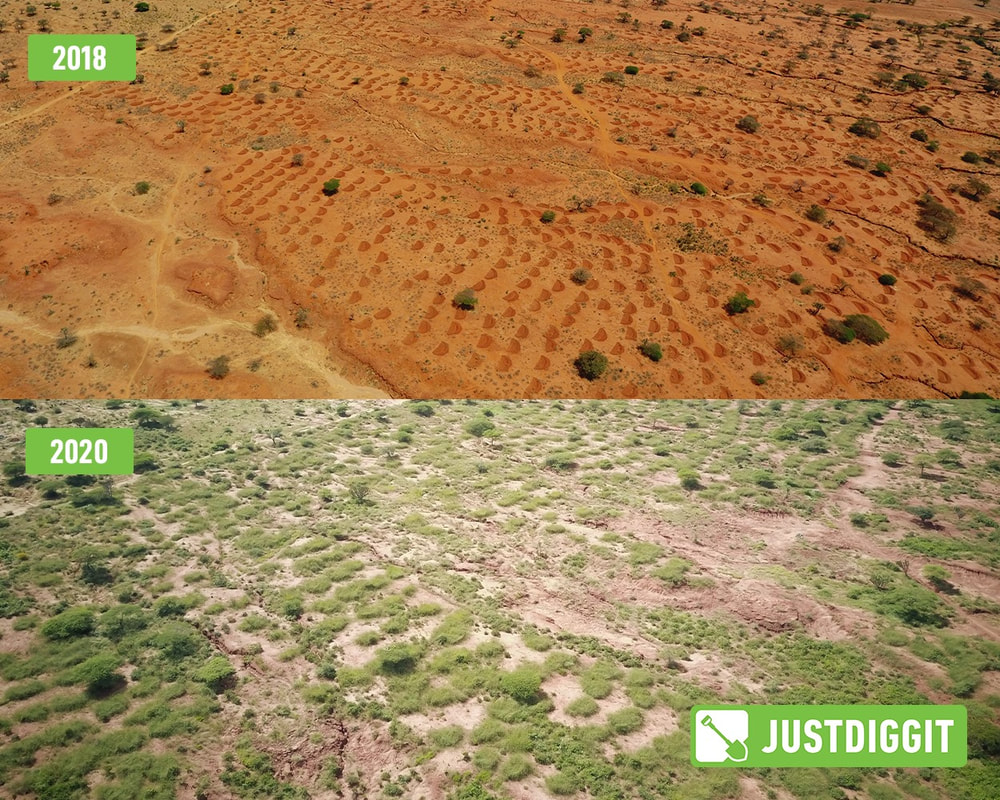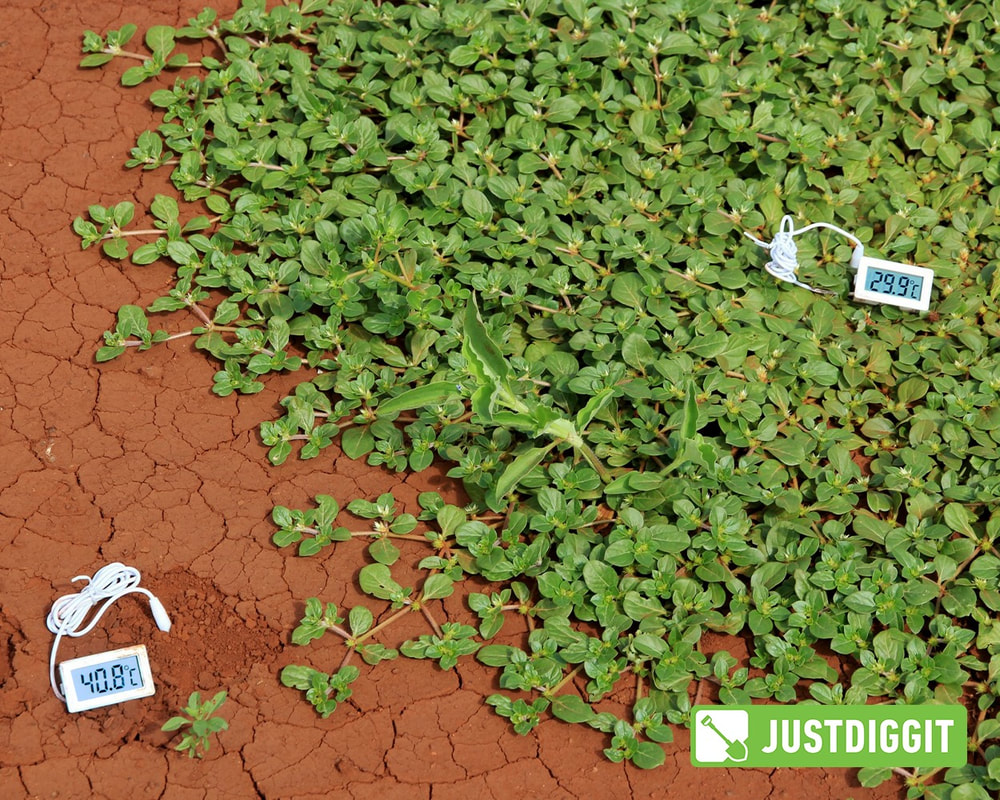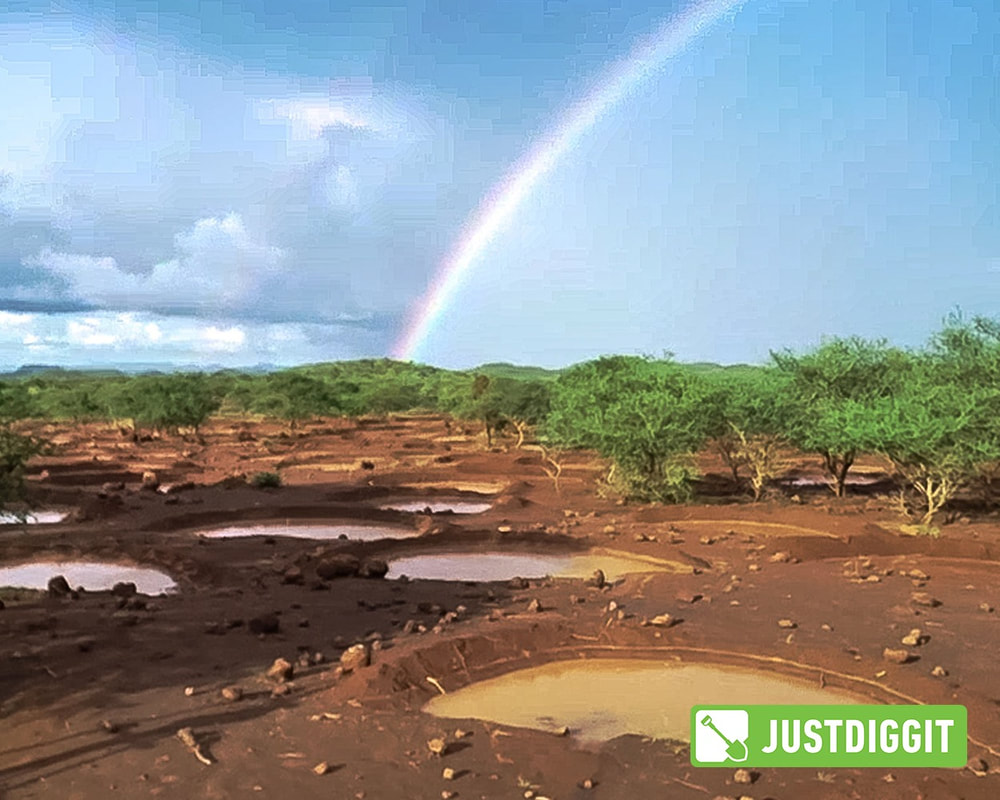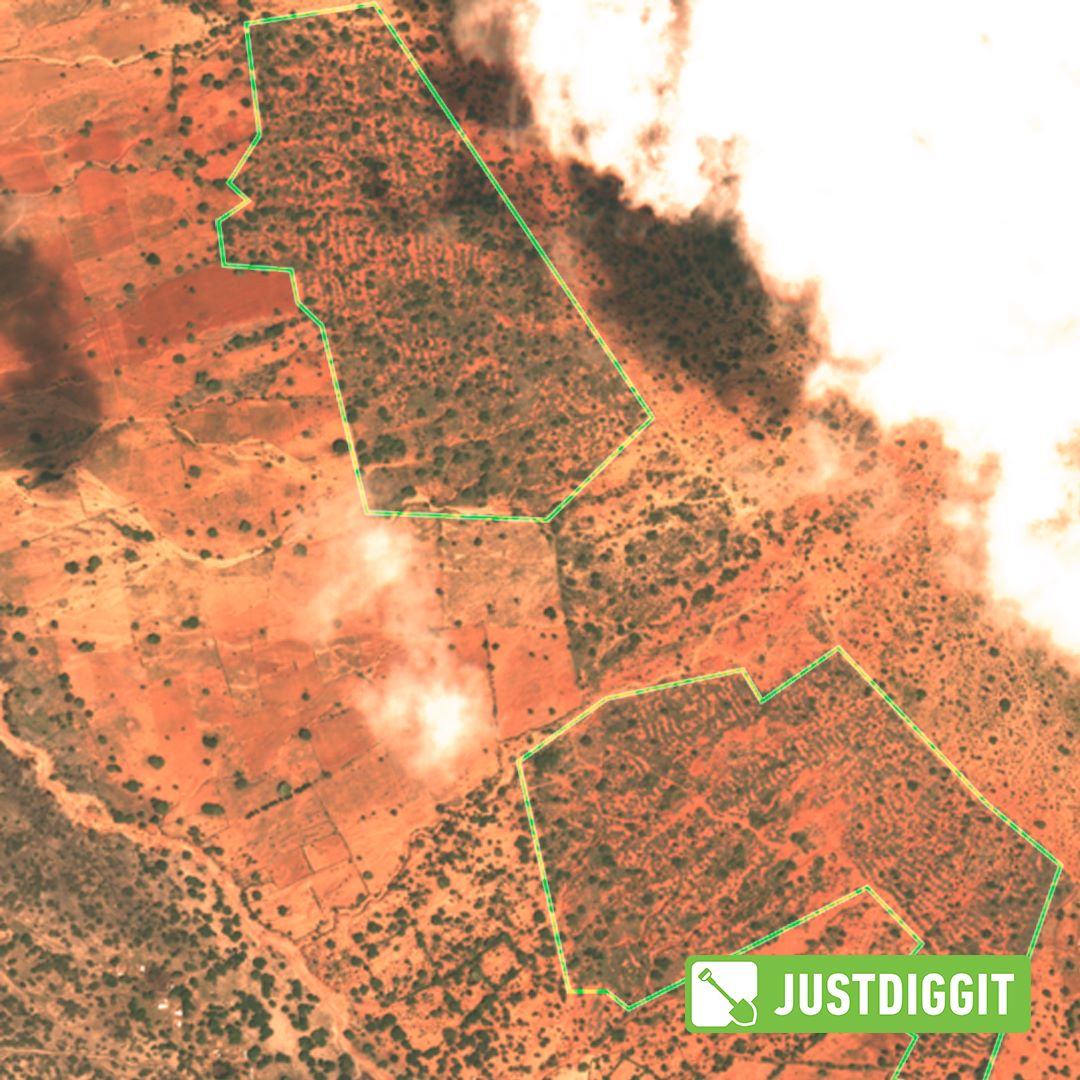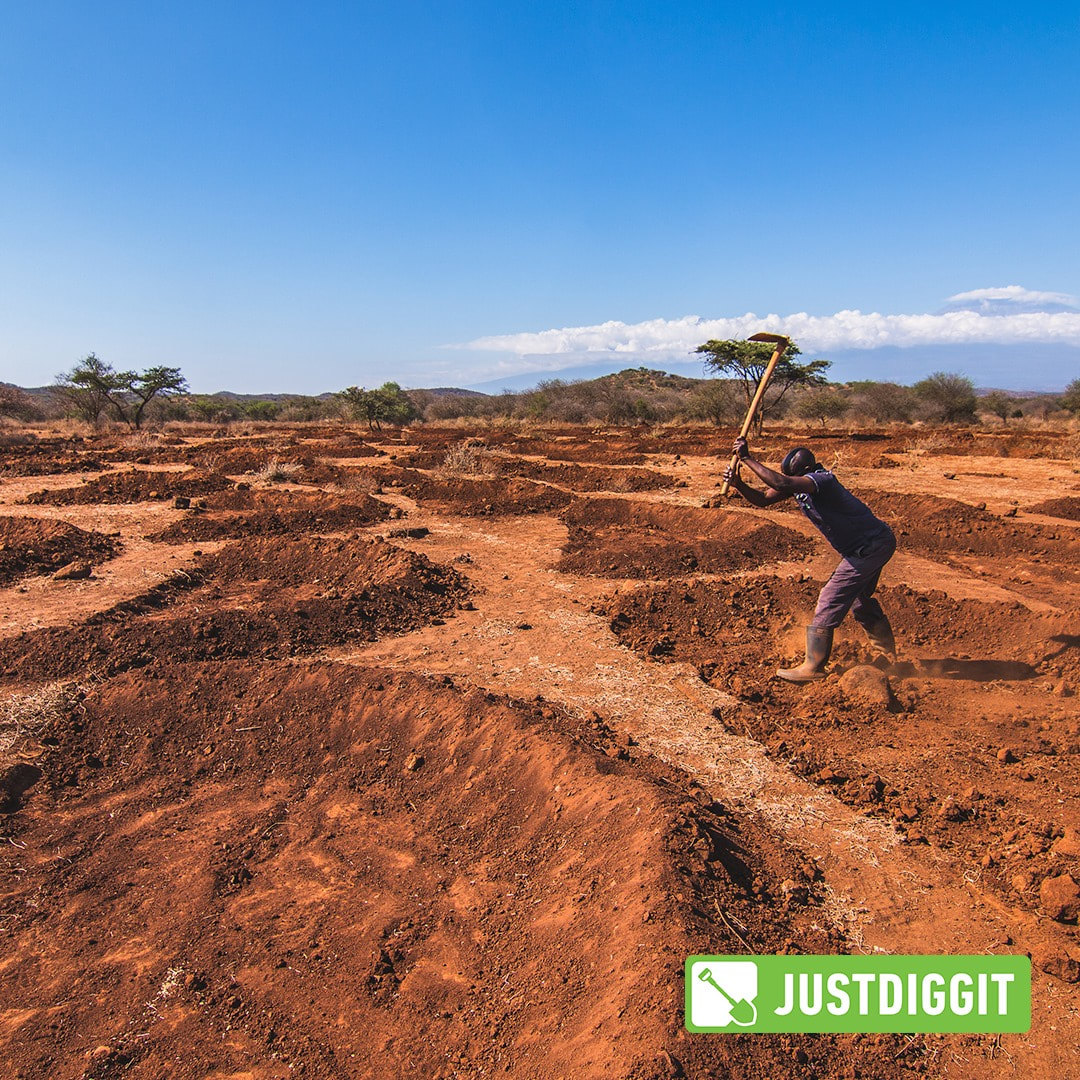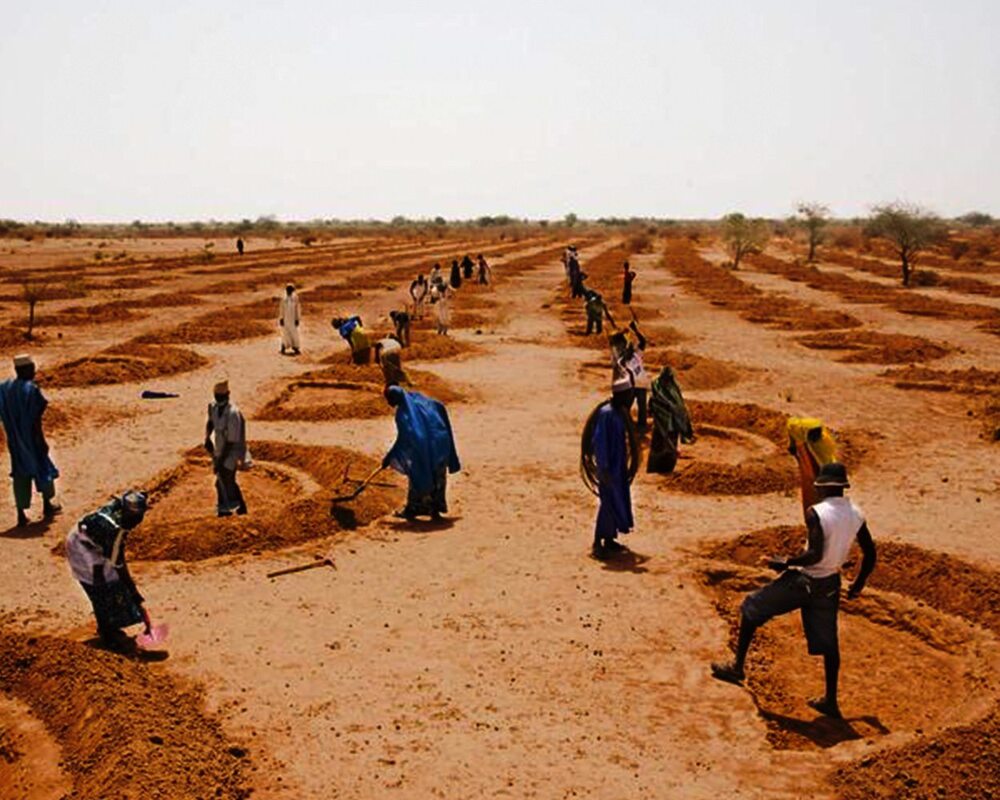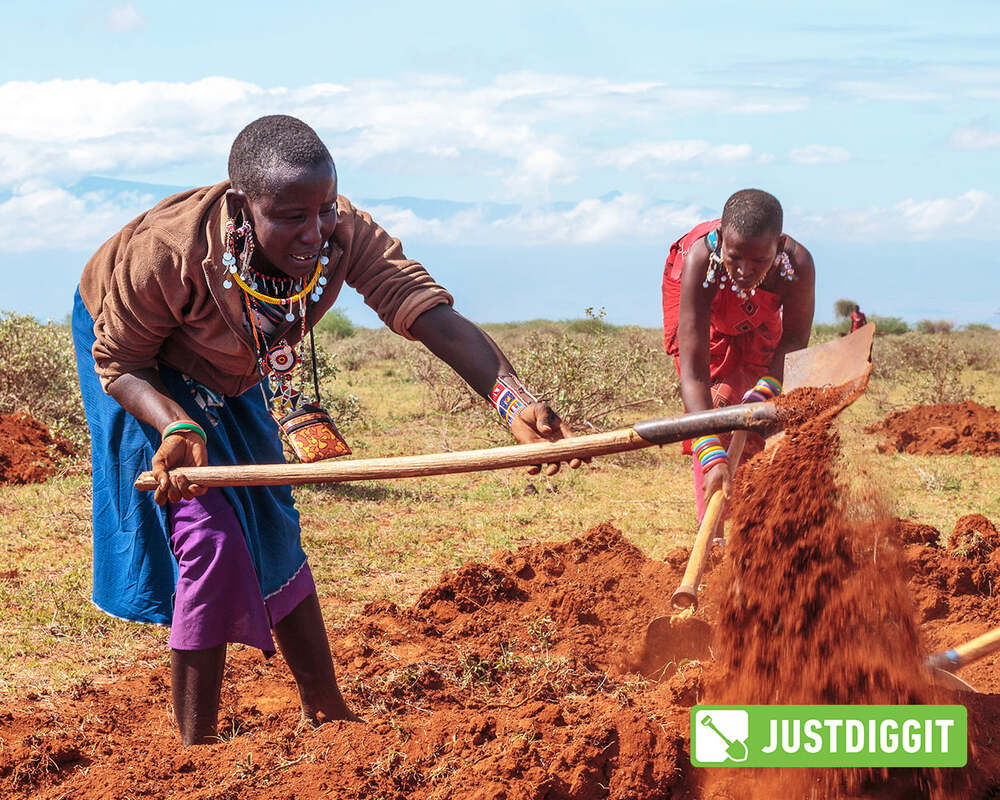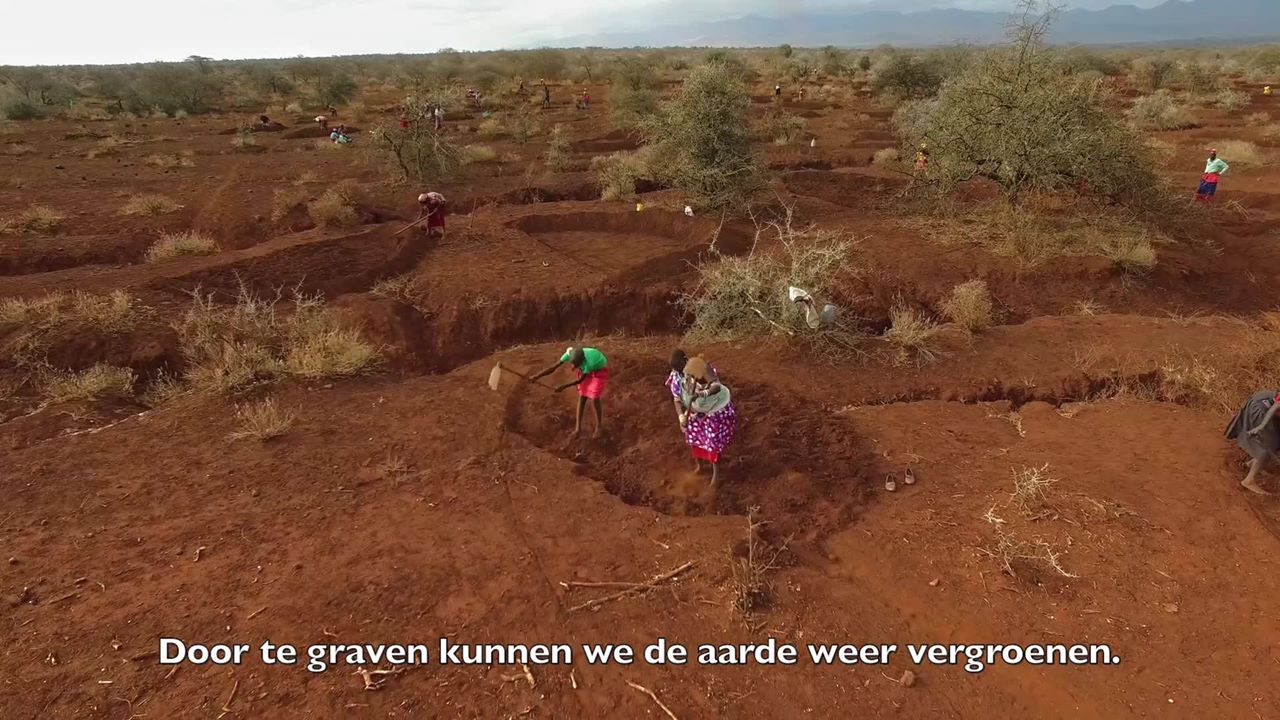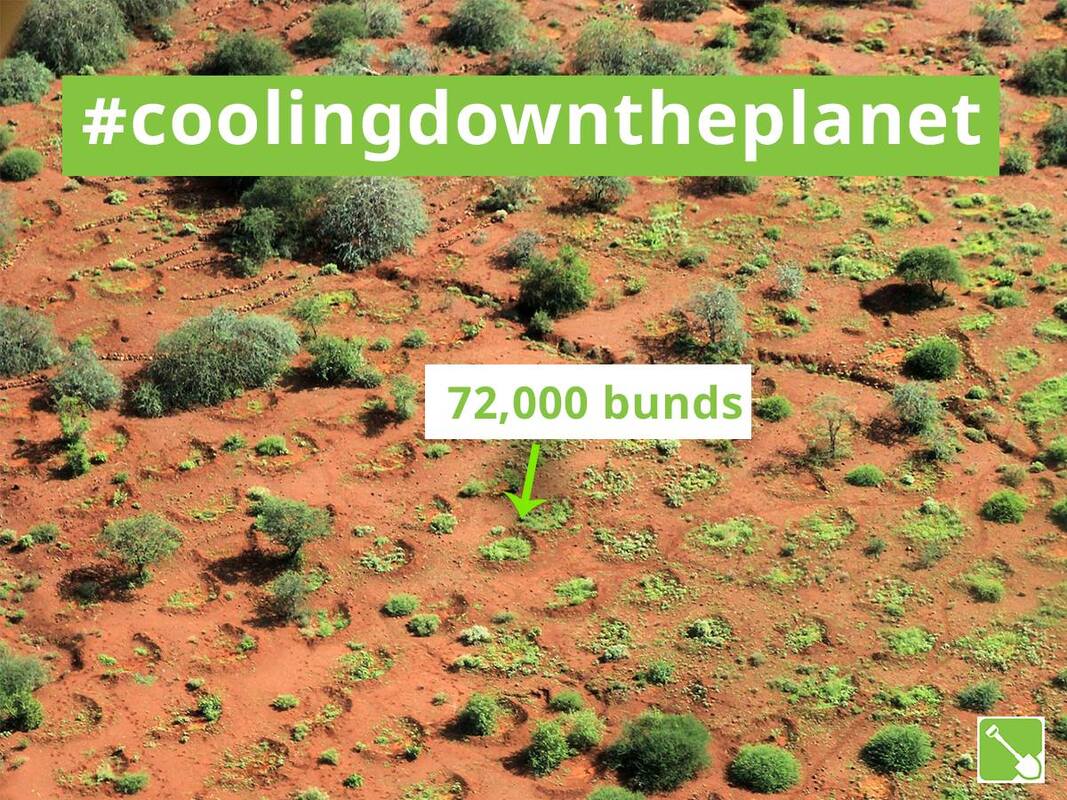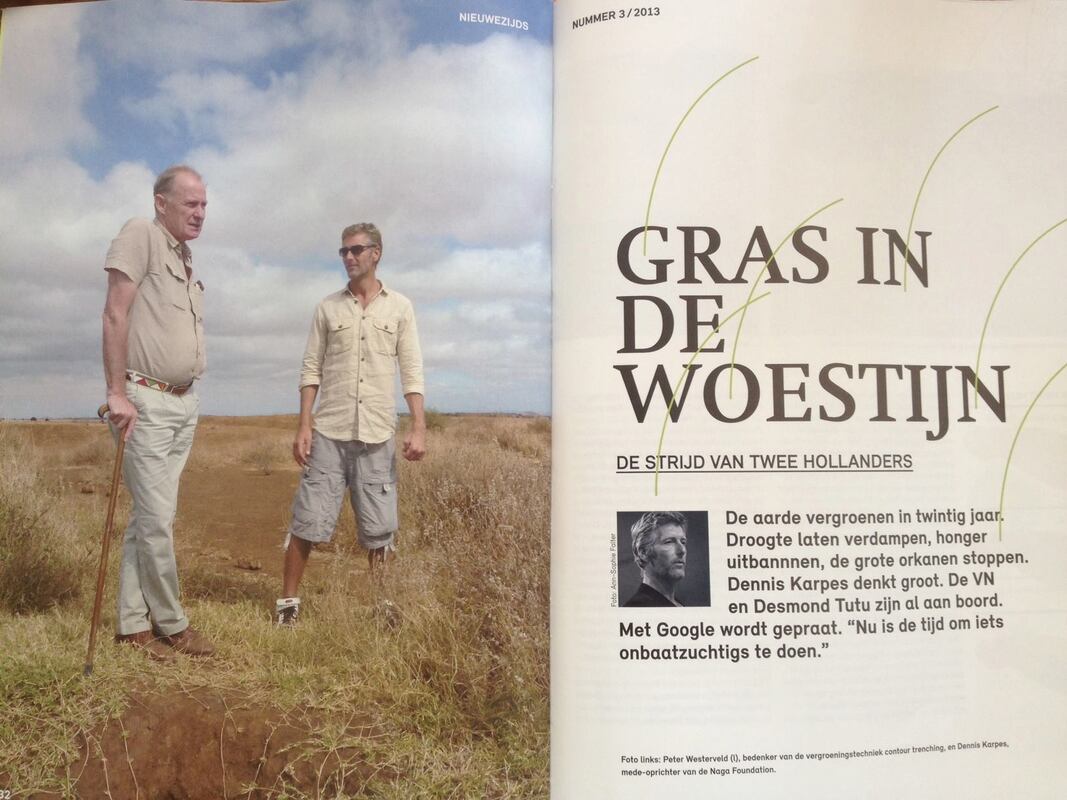13.06.2021
How Digging Holes Can Save Kenyan dryland farmers ?
In the Southen part of Kenya, the Maasai community has taken up digging holes, referred to as rainwater bunds, to reclaim the land from the desert effects and have vegetation for their livestock. The communities in collaboration with Justdiggit, a Dutch foundation that restores degraded ecosystems by developing, initiating, and co-funding large-scale landscape restoration programs within Africa, has dug over 145,248 semi-circular rainwater bunds since 2016. They have successfully re-greened 1,250 hectares of grass - and woodland in and around Amboseli National Park. Bunds are pits in the ground in the shape of a crescent moon. By digging, the hard top layer of the earth is opened up, ensuring rainwater is retained. These special holes capture rain which would otherwise wash away over the dry and barren soil. The rainwater is slowed down and stored temporarily behind the bund, enabling the water to infiltrate the soil. The semi-circular shape of the bunds is an optimal balance between the amount of water captured and the labor requirements. The holes are 2.5 meters long and 5 meters wide, which is estimated to be the size of an adult elephant. Credit: WASTE ED
Poverty deprives people of adequate education, health care and of life's most basic necessities- safe living conditions (including clean air and clean drinking water) and an adequate food supply. The developed (industrialized) countries today account for roughly 20 percent of the world's population but control about 80 percent of the world's wealth.
Poverty and pollution seem to operate in a vicious cycle that, so far, has been hard to break. Even in the developed nations, the gap between the rich and the poor is evident in their respective social and environmental conditions.
Poverty and pollution seem to operate in a vicious cycle that, so far, has been hard to break. Even in the developed nations, the gap between the rich and the poor is evident in their respective social and environmental conditions.








